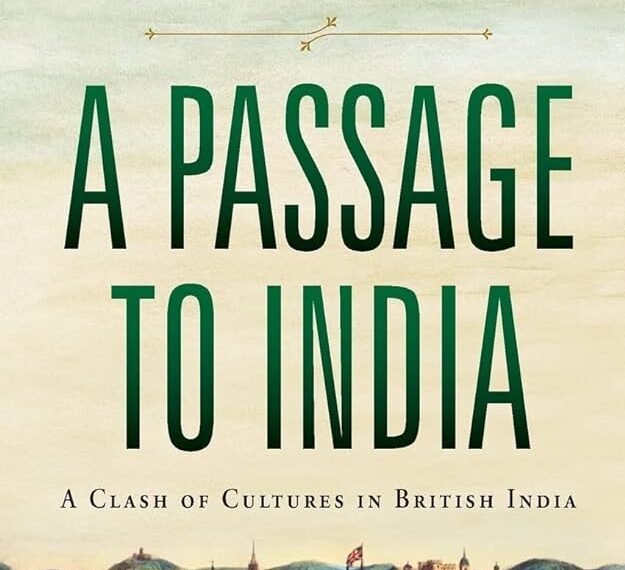Discuss the ways in which forces of race and class shape characters and episodes in A Passage to India
E.M. Forster’s novel “A Passage to India” provides a rich and complex exploration of how the forces of race and class shape characters and episodes within the context of British colonial India. First published in 1924, the book explores the complex relationships that exist between the native Indian population and the British colonizers in India, with a particular emphasis on the made-up town of Chandrapore. Forster deftly illustrates how race and class interact to weave a web of misinformation, discrimination, and power that has far-reaching effects throughout the story.
Race and Class in Colonial India: Before delving into the specific characters and episodes, it is crucial to understand the broader historical and social context in which “A Passage to India” is set. British colonial rule in India was characterized by a rigid racial hierarchy, where the British colonial rulers held a superior position in society, and the native Indians were often treated as subordinate and inferior. This racial hierarchy was closely intertwined with the class structure, as it reinforced the British perception of themselves as the ruling class and the native Indians as subjects.
Also Read-
How does Dickens’s novel Great Expectations engage with the theme of upward social mobility and self-improvement
Discuss the ways in which Pride and Prejudice foregrounds the social and economic realities of women’s lives in Jane Austen’s time
Comment on Fielding’s narrative strategies in Tom Jones
Characters and Episodes:
- Dr. Aziz: Dr. Aziz is one of the central characters in the novel and represents the native Indian population. His interactions with the British, particularly Mr. Fielding and Mrs. Moore, reveal the complexities of race and class. Aziz initially believes that Fielding, an Englishman, is different from other British colonizers and is open to forming friendships. However, racial tensions and cultural misunderstandings lead to Aziz’s eventual arrest for an alleged sexual assault. This incident highlights how racial prejudice can trump class differences, and even a doctor like Aziz can be subjected to injustice and discrimination.
- Mrs. Moore: Mrs. Moore, an Englishwoman, arrives in India with an open and empathetic attitude towards the Indian people. Her experiences, particularly her visit to the Marabar Caves, lead to her realization that the racial and cultural divide between the British and Indians is insurmountable. She is troubled by the inherent racism she observes in the British community, and this realization shapes her perspective and actions. Mrs. Moore’s journey is emblematic of the clash between British class distinctions and the pervasive racial bias.
- Ronny Heaslop: As a British civil servant, Ronny Heaslop represents the colonial class structure. He is engaged to Adela Quested and adheres to the British colonial mindset of racial superiority. His class privilege as a colonial administrator reinforces his sense of entitlement, and he ultimately chooses to protect British interests at the expense of justice and truth.
- Adela Quested: Adela Quested’s experience in India challenges her preconceived notions about the Indian population. Her relationship with Dr. Aziz, and the subsequent events at the Marabar Caves, expose the complexity of racial and class dynamics. Adela’s struggle with her own identity as a British woman, coupled with her growing awareness of the racial tensions, demonstrates how race and class intersect in her personal journey.
- The Marabar Caves Incident: The incident at the Marabar Caves is a pivotal episode that epitomizes the novel’s exploration of race and class. The caves, with their mysterious and disorienting echo, symbolize the impossibility of true understanding between the British and the Indians. Adela’s traumatic experience at the caves becomes a catalyst for racial tension, as her accusations against Dr. Aziz lead to his arrest and trial.
- The Trial of Dr. Aziz: Dr. Aziz’s trial is a central event in the novel that showcases the power dynamics of race and class. Despite Aziz’s education and professional standing, he faces prejudice and discrimination during the trial. The British legal system, in this instance, serves as a tool to reinforce colonial authority and control over the native population.
Themes and Insights:
- Racial Prejudice vs. Individual Relationships: The novel underscores the tension between racial prejudice and genuine, individual relationships. While some characters, such as Mrs. Moore and Dr. Aziz, seek genuine connections across racial lines, the broader societal forces of race and class often thwart such efforts.
- Imperialism and Its Impact on the British: “A Passage to India” also delves into the impact of British imperialism on the British themselves. It portrays the dehumanizing effects of colonialism on the colonizers, particularly in their interactions with the native population.
- Ambiguity and Ambivalence: Forster’s narrative is characterized by ambiguity and ambivalence. The characters and events are portrayed in shades of gray, rather than black and white. This complexity reflects the intricate interplay of race and class in colonial India.
- Power and Control: The novel illuminates how the British colonial authorities exerted control over the native Indian population through racial and class hierarchies. It also highlights how this control was sometimes tenuous, as seen in the character of Fielding.
Conclusion
E.M. Forster’s “A Passage to India” provides a profound and multi-faceted exploration of how the forces of race and class shape characters and episodes within the complex and charged context of British colonial India. The novel delves into the intricate dynamics between the British colonizers and the indigenous Indian population, highlighting the pervasive racial hierarchy and class distinctions that were inherent to the colonial experience. Through a diverse cast of characters and pivotal episodes, the novel showcases the complexities, tensions, and consequences of these forces.
Characters like Dr. Aziz, Mrs. Moore, Ronny Heaslop, and Adela Quested represent different facets of this interplay between race and class. The Marabar Caves incident and Dr. Aziz’s trial serve as central episodes that symbolize the insurmountable gap between the British and Indians, leading to trauma and injustice. The novel also underscores the dehumanizing effects of colonialism on the British themselves, as they grapple with their own prejudices and the power dynamics that shape their lives in India.
The novel “A Passage to India” tackles issues of ambiguity, racism, and the effects of imperialism on colonizers and colonized. It provides an engaging and thought-provoking analysis of the long-lasting effects of colonialism, emphasizing the influence of bias on how people interact with one another and the social institutions that uphold racial and class divisions.
“A Passage to India” presents themes of racial prejudice, ambiguity, and the impact of imperialism on both colonizers and colonized. It offers a compelling and thought-provoking commentary on the enduring consequences of colonialism, highlighting the power of prejudice in shaping human interactions and the societal structures that maintain racial and class hierarchies.
FAQ.
What are the Marabar Caves, and why are they significant in the novel?
The Marabar Caves are a group of caves in the fictional town of Chandrapore. They are significant in the novel because Adela Quested’s traumatic experience at the caves leads to her accusations against Dr. Aziz, which sets off a chain of events that explore the complex dynamics of race and class in colonial India.
How does the novel depict the impact of colonialism on the British characters?
The novel portrays the dehumanizing effects of colonialism on the British characters, particularly in their interactions with the native Indian population. It reveals how the exercise of power and the reinforcement of racial and class hierarchies affected the British colonizers, leading to ambivalence and inner conflicts.
How does Dr. Aziz’s trial exemplify the novel’s themes of race and class?
Dr. Aziz’s trial exemplifies the themes of race and class as it portrays the racial prejudice, discrimination, and power dynamics present in the British legal system. Despite his education and professional standing, Dr. Aziz faces injustice, revealing how these forces shape colonial society.
What does the novel reveal about the complexity of human relationships across racial and class lines?
The novel underscores the complexities of human relationships across racial and class lines. While some characters seek genuine connections, broader societal forces often thwart these efforts, leading to misunderstandings and conflicts.
Why is “A Passage to India” considered a seminal work in postcolonial literature?
“A Passage to India” is considered a seminal work in postcolonial literature because it delves into the enduring consequences of colonialism and the power dynamics that shape the interactions between colonizers and the colonized. It provides a nuanced exploration of racial and class hierarchies and their impact on individuals and societies in a colonial context.


